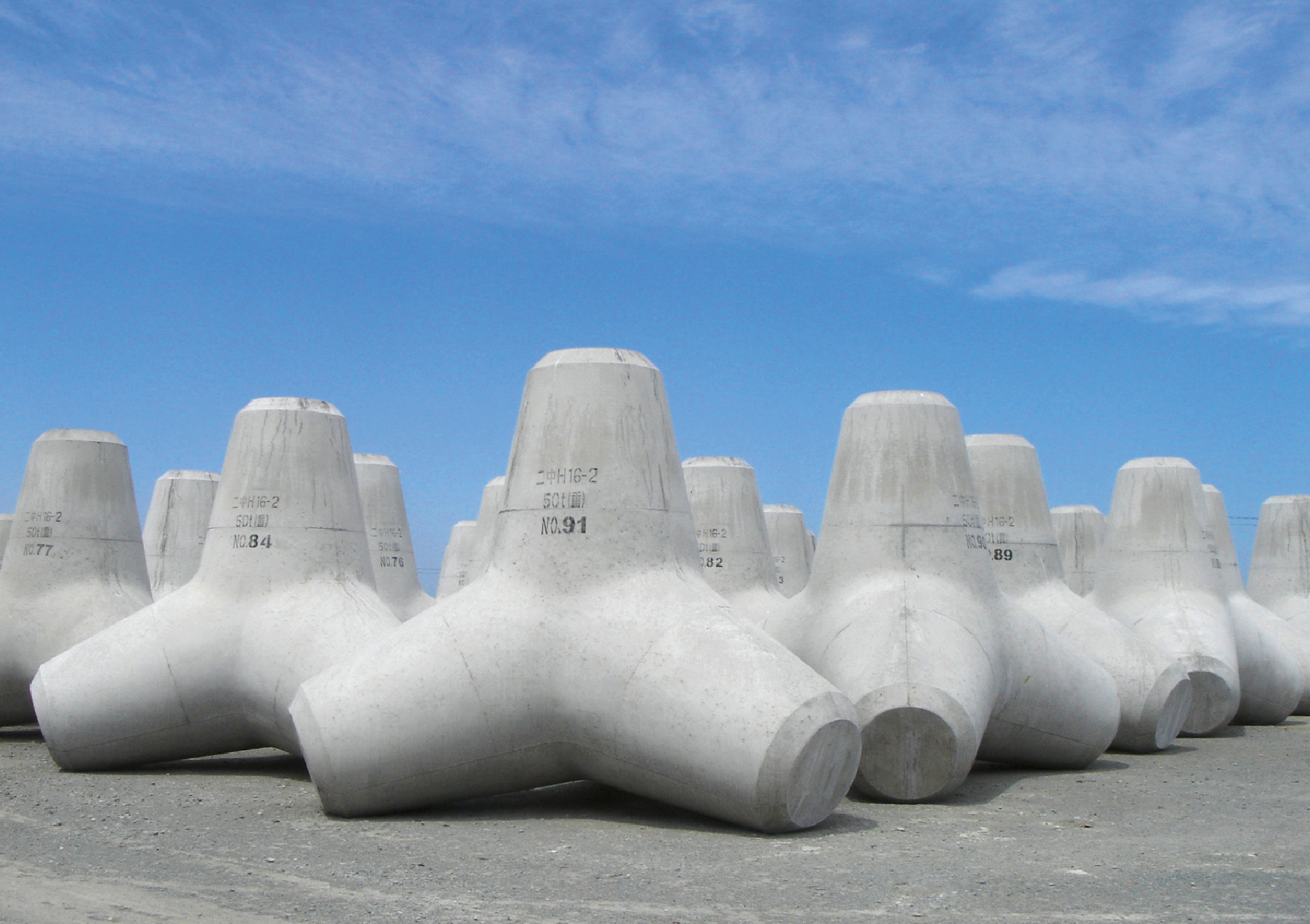The Silence of the Dams: An Interview with Tetrapod No. 16-2-77
I am a rock
Mats Bigert, Sina Najafi, and Tetrapod No. 16-2-77

Coastal erosion is not a new problem, but global warming—and the resulting changes in storm patterns and rising sea levels—have made the issue a critical one for what environmental policymakers call Low-Elevation Coastal Zones around the globe. One strategy in use for decades has been “coastal breakwater armoring” or “hard stabilization.” Before World War II, this was accomplished primarily by using rocks and boulders. But the postwar period has seen the rise of an array of new structures created specifically for this task—tetrapods. These concrete entities, often endowed with four legs, are designed to remain stable under even the most extreme weather conditions. When arranged in lines, they create an interlocking, porous barrier that dissipates the power of waves and currents.
Japan, with 35,000 kilometers of vulnerable coastline along its nearly 4,000 constituent islands, is the country where the tetrapod population has grown most rapidly—an estimated fifty percent of its shores are currently protected by these stoic figures. In late June, Mats Bigert and Sina Najafi traveled to Tokai, a coastal town approximately 130 kilometers north of Tokyo, to meet with Tetrapod No. 16-2-77.
CABINET: Let’s talk about you. Where are you from?
Tetrapod No. 16-2-77: The modern tetrapod used for coastal defense was developed in 1950 by a French laboratory called Laboratoire Dauphinois d’Hydraulique. Since then, many companies worldwide have developed their own versions. Eight years after the French tetrapod made its debut, the Americans created something called the Tribar that looks like a huge concrete trivet. And then there was the Modified Cube (US, 1959), the Stabit (UK, 1961), the Akmon and the Tripod (Netherlands, 1962), the Dolos (South Africa, 1963), the Cob (UK, 1969), the Antifer Cube (France, 1973), the Seabee (Australia, 1978), the Accropode (France, 1980), the Shed (UK, 1982), … wait … big wave coming … the Haro (Belgium, 1984), the Hollow Cube (Germany, 1991), the Core-Loc and the A-Jack (US, 1996 and 1998, respectively), and the Diahitis (Ireland, 1998), just to name a few.
That information about your extended clan is very useful, but we actually meant where are you from?
Oh, I’m from right here. I was made by a company called Fudo Tetra, which, coincidentally, has the trademark on the word Tetrapod. Fudo Tetra manufactures molds for eighteen different tetrapod models and rents them out to other companies, which then cast us in concrete right by the shore where we are needed. Otherwise, the transportation would be too costly. We are quite heavy characters; the smallest of us weighs 500 kilograms and is about one meter high. The largest one …. hold on, wave… is five meters tall and weighs some eighty tons. I myself weigh in at thirty tons. We’re all numbered, as you can see, and observed by satellite. Our smallest movements are measured in case we need reinforcements or to be rearranged for optimal effect.